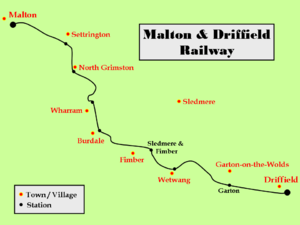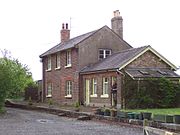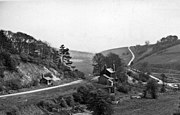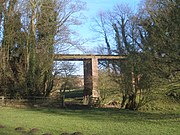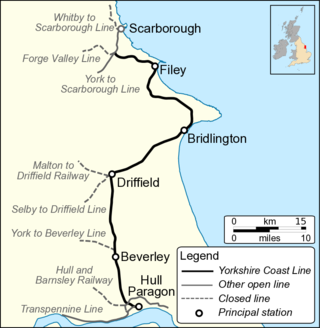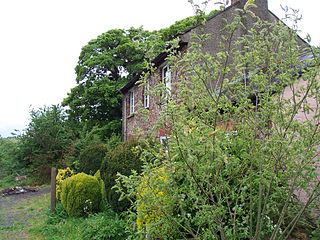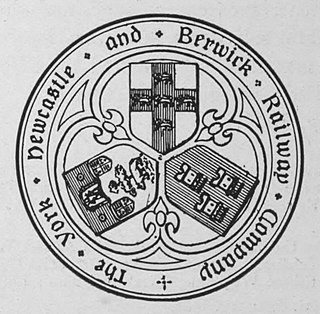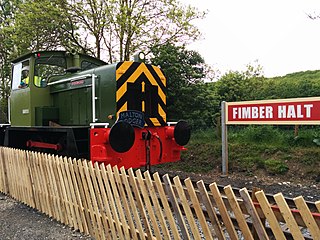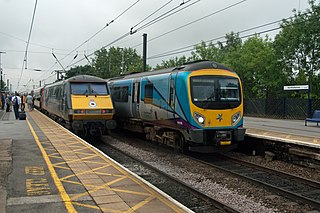The Malton and Driffield Junction Railway (1846–1870)
Promotion of a line between Malton and Driffield dates to at least the mid-1840s when George Hudson subscribed £40,000 towards a Malton and Driffield Junction Company, which was intended to link to a proposed branch of the Great North of England Railway from Thirsk to Malton. [note 1] The Malton and Driffield Junction Railway was promoted as part of a line of communication from Hull to Newcastle-upon-Tyne and beyond to Scotland as well as opening up the agricultural districts of the East Riding of Yorkshire, and providing a short route to the new seaside resorts on the East Yorkshire coast. A connection via the proposed Thirsk and Malton Railway was required for the connections northward. [map 1] Both the Newcastle and Darlington Junction Railway (N&DJR) and York and North Midland Railways (Y&NMR) supported the scheme. [6]
A previous scheme from Thirsk to Driffield, the Hull, Malton and Northern Union Railway was resurrected and promoted in opposition, [note 2] but was unsuccessful. An act empowering the construction of a 24 miles (39 km) line was enacted in June 1846, allowing £240,000 to be raised for its development through shares, and a further £80,0000 through loans. [8] [note 3]
Part of the rationale for the line was a connection to the Thirsk and Malton Railway, which the Newcastle and Darlington Junction had obtained an act for (1846) but not built. A case was brought against that company's successor the York, Newcastle and Berwick Railway (YN&BR) to complete the line. [note 4] As a result, a second act was obtained with the work completed 1853. [9] The Malton and Driffield company subscribed £35,000 towards the scheme with the YN&BR contributing the other part. [note 5] In the same time period (1850s) the York and North Midland Railway held £40,000 worth of shares in the M&DJR. [8] [note 6]
Construction
Burdale Tunnel, north portal.
[map 2] (2005)
Burdale Tunnel, south portal.
[map 3] (2005)
The engineer was John Cass Birkinshaw, the assistant engineer Alfred Lamert Dickens. In addition to the mainline from New Malton (on the York and Scarborough Railway [map 4] ) to Great Driffield (on the Hull and Selby Bridlington branch [map 5] ) the plans included a 5 miles 4.5 chains (5.06 miles, 8.14 km) branch from Frodingham Bridge on the River Hull. On the original plan the minimum curve was 20 chains (1,300 ft; 400 m) with maximum gradients of 1 in 60, and 1 in 158. The line also included a tunnel of 1,694 yards (1,549 m). [11]
The first seven miles (11 km) of the line from Malton included severe gradients, ascending, including 2.5 miles (4 km) at 1 in 70, and required heavy civil engineering works. The highest point of the line was within the tunnel, where the southbound gradient changed from 1 in 70 up to 1 in 85 down. As built the line included a number of timber bridges, and a timber viaduct at Wharram. Land had been acquired for a double track line but only a single track was laid, using 65 pounds per yard (32.2 kg/m) weight rails, on cross sleepered track. The line was to be worked by the York, Newcastle and Berwick Railway, under the same rules as the Thirsk and Malton Line. [13]
Work on the line began in 1847, and by 1849 over £100,000 had been expended on the construction of the line, the majority on works (£52,921) and permanent way (£31,597). [15] The bursting of the speculative bubble of the Railway Mania in the late 1840s adversely affected the line's prospects. [16] By early 1849 the company's calls on shares were in arrears. [15]
Financial problems caused the company to abandon the construction of a double track line and only construct a single line. In 1850 the company applied to parliament to alter the path of the line; [note 7] the amendment act was passed in 1851. [note 8]
By 1851 about half (10 miles or 16 kilometres) of the line had been completed as a single line; the 5-mile (8 km) branch was by then in abeyance. [8] In early 1852 the calls on shares were still in arrears requiring the company to funds by loans. An estimated £65,000 was required for the completion of the line; £40,000 had been borrowed by late January 1852; over £55,000 by mid 1852. [17]
Agreement was reached with the Y&NMR to pay a fee to use the station and track into Driffield. [18] The 19-mile (31 km) was opened formally 19 May 1853, becoming open to public traffic on 1 June. The line had stations at Settrington, [map 6] North Grimston, [map 7] Wharram, [map 8] Burdale, [map 9] Fimber, [map 10] [note 9] Wetwang, [map 11] and Garton; [map 12] Malton station and Driffield station were used as termini. [map 13] [map 14]
Operations
In the beginning three passenger trains ran in each direction Mondays to Saturdays, calling at all stations, with two on Sundays. By the end of the 19th century the Sunday service had ceased, but the line reached its high water mark with four trains each way each weekday. Thereafter the line ran a notably consistent three trains in each direction calling at all stations, Mondays to Saturdays, until the service was withdrawn in 1953. Some of the services had two coaches, others one, though it was far from rare to add one or more horseboxes in what was and remains racing country. Loadings were good on Saturdays (Market Days) but schoolchildren were the mainstay during the week.
By 1926 two pick-up goods trains ran daily, in opposite directions, with crews swapping trains mid-journey. These were at times very well loaded, but the traffic only declined in the face of road competition. By the end there were only two pick-up goods per week, both poorly loaded. In the words of The Railway Magazine "Two trains a day might have maintained the railway link ... two a week would not."
The line was conceived as part of a through line between Hull and the north east of England. The only hint of such services came with the Summer Saturday Scarborough to Newcastle and Glasgow holiday trains. Running from Scarborough they halted at Malton, attached a pilot engine at the rear, reversed up onto Malton and Driffield metals at Scarborough Road Junction [30] where the pilot was uncoupled. This locomotive then acted as a banker to get the long train moving forwards once again towards Gilling, Pillmoor and the East Coast Main Line. [31] These trains used a rich variety of motive power, with even LNER Class A4 4-6-2s on occasions, but most commonly LNER Class V2 2-6-2s. In summer 1950 at least the line was used for a Summer Saturday Filey to Newcastle train and return, which travelled via Driffield, Wharram and Gilling, joining the East Coast Main Line at Pilmoor Junction. The other service to use the Malton, Scarborough Road Junction then reverse route was the two trains six time per year beginning and end of term specials, one from King's Cross and the other from Liverpool, to Ampleforth College. This lasted until 28 April 1964.
The closest freight traffic to the original concept was chalk from quarries at Burdale and Wharram bound for steelworks on Teesside. This underwent spectacular boom and bust in the 1920s, petering out in the 1950s, which spelled the line's death-knell.
As for through Hull-Tyneside trains, the junction at Driffield tells its own story – it was facing the "wrong way". No source talks of through traffic, even in wartime. The closest thing to through traffic were scenic excursions which used the line as a scenic part of a scenic route or in some cases toured the line's stations' floral displays. Often such trains' locomotives traversed the line tender-first because the trains arrived the "wrong way" from Hull or Doncaster and would resume travelling the "right way" after a second reverse at Malton. Furthermore, no source comments on how it could be that conscientious staff could find the time to keep beautiful gardens.
Two very occasional traffics added to the line's diminishing income: special trains for royalty and enthusiasts, both of which gathered publicity beyond their revenue. The latter were a phenomenon of the 1950s, with the best recorded running along the line (and others) on 2 June 1957 [46] and 23 June 1957. [48] The King and Queen arrived at Sledmere and Fimber by train on 6 July 1948. As with the summer Scarborough to Tyneside trains mentioned above, other royal trains touched the north end of the line when making double-reverses to get to events in Ryedale.
Amalgamation
In the early 1850s The Leeds Northern (LNR), York, Newcastle and Berwick and York and North Midland railways were considering amalgamation, and in 1853 the M&DJR was admitted to that group of companies; and became part of joint traffic agreements. In 1854 an act of parliament allowing the YN&BR, LNR and Y&NMR companies to amalgamate into a new "North Eastern Railway" (NER) was passed; the association of M&DJR was formally announced at the first meeting of the NER, where, the distribution of income was decided to be based on traffic receipts over the next 5 years; the M&DJR obtained one director of a board of seventeen, and the company ceased to exist as an independent entity from 1 September 1854. [note 10] In 1863 agreements relating to the merger of the Stockton and Darlington Railway (S&DR) set the Malton section's share of the combined company's profits at 0.29%, a sum which was not sufficient to meet running costs; the company attempted to renegotiate requesting a share of gross revenue, but were denied.
Difficulties and disappointments arising from line were recalled in a scathing article in the Railway News, written on the eve of the consolidation or NER shares: [note 10] [54]
The line was a gross mistake throughout – but was conceived in times when [...] high sounding notions of a "grand connecting link" in the "Hull and Glasgow Direct" were uppermost. [...] The hapless Malton and Driffield has never paid its interest on borrowed capital, is now £50,000 in debt, and is destined, we are told, to total annihilation.
—
Railway News (6 November 1869) [54]
History 1870–1958
In 1890 a line from Market Weighton was opened, promoted as the Scarborough, Bridlington and West Riding Junction Railway (act passed 1885), and worked by the NER. The line made a junction with the M&DJR at Driffield (Driffield Junction West) just west of the M&DJR's junction with the Hull to Bridlington Line. [56] [map 15]
As a result of the 1921 Railways Act, in 1923 the line became part of the London & North Eastern Railway (LNER). In 1948 after nationalisation of the railway as a result of the Transport Act 1947 the line became part of the North Eastern Region of British Railways.
In the 1920s the line was used to transport lime (chalk) from the quarry at Wharram (open 1918–1930) to the iron and steel industry on Teesside; the line handled around 100,000 tons per year.
In 1922 a quarry opened and Burdale for the same purpose which provided work for the line until the quarry's closure in 1955.
The route was closed to passenger traffic on 5 June 1950 but remained open for goods. It reopened to passengers from 12 to 16 February 1953 and again in February 1958 when roads were impassable due to snow.
The line closed completely on 20 October 1958 and was lifted by 1961 except for a short stretch near Scarborough Road Junction to allow trains to access the Malton to Thirsk line.
